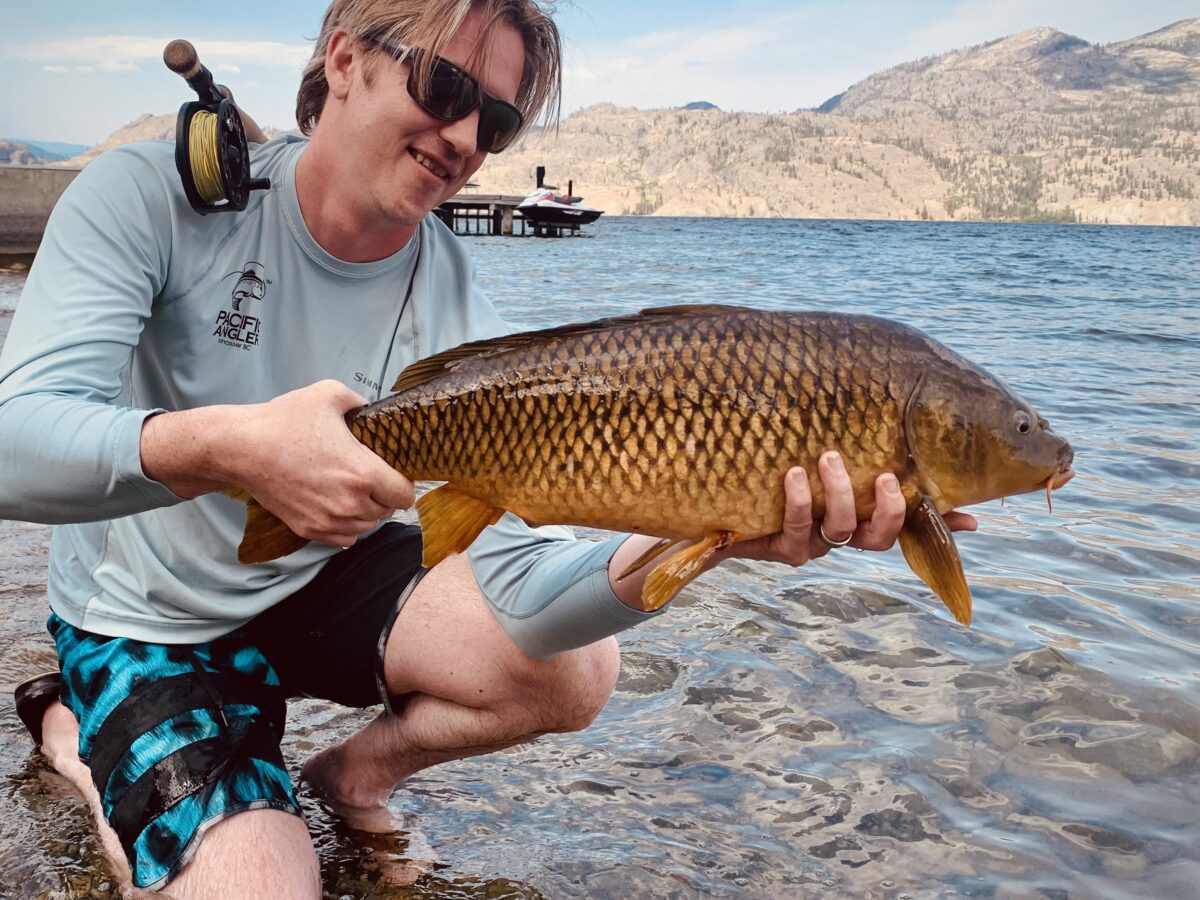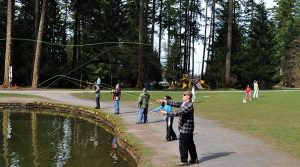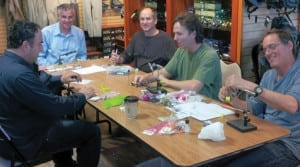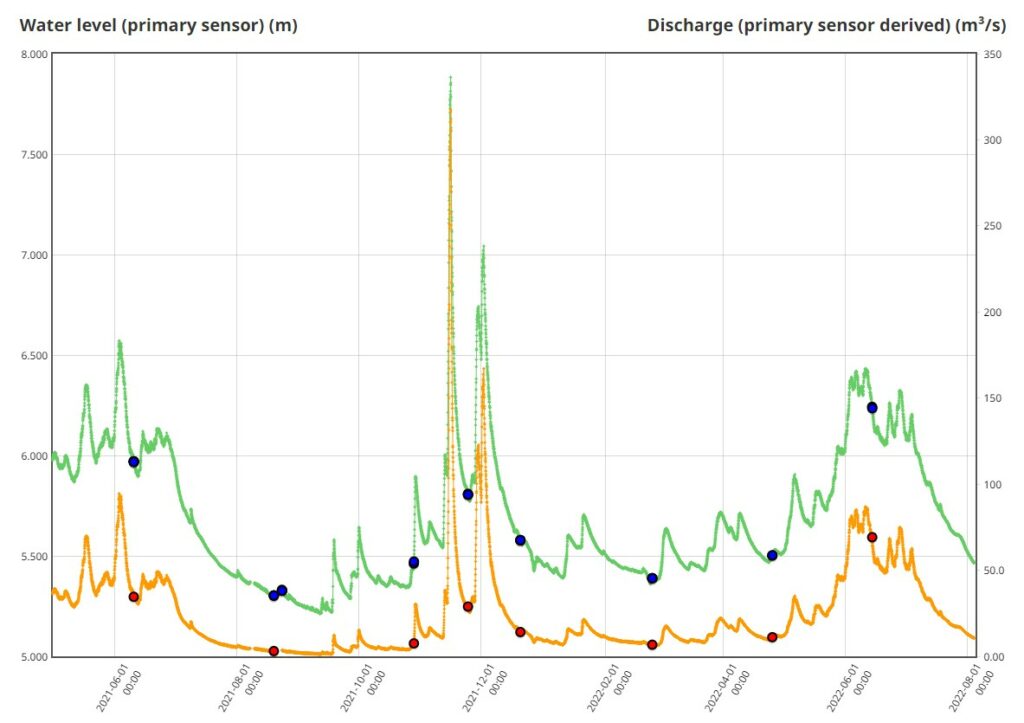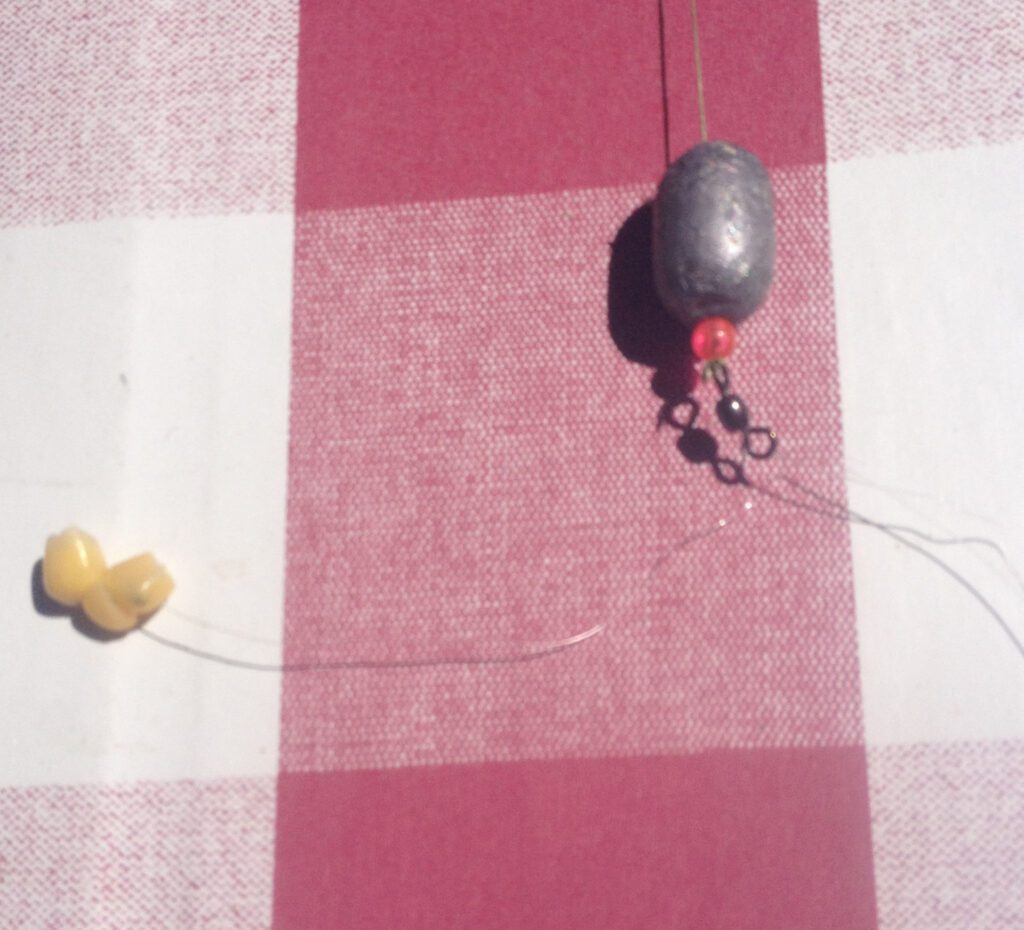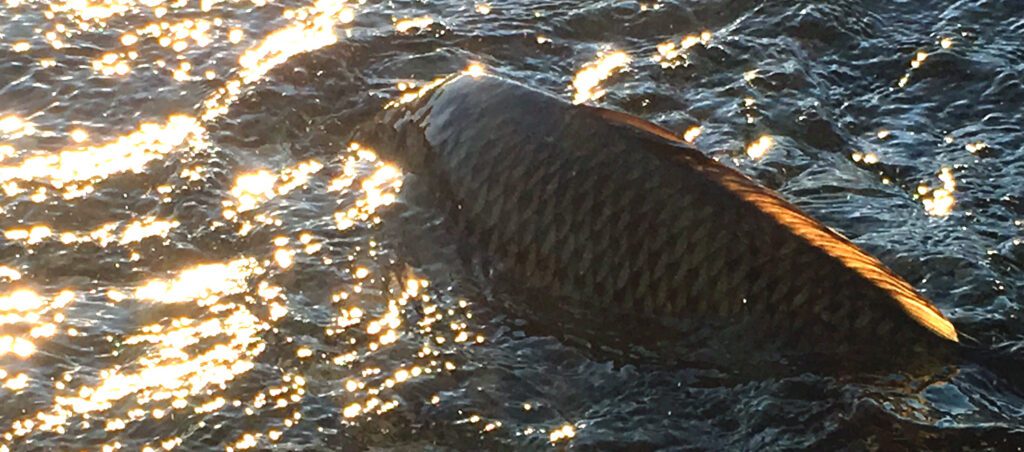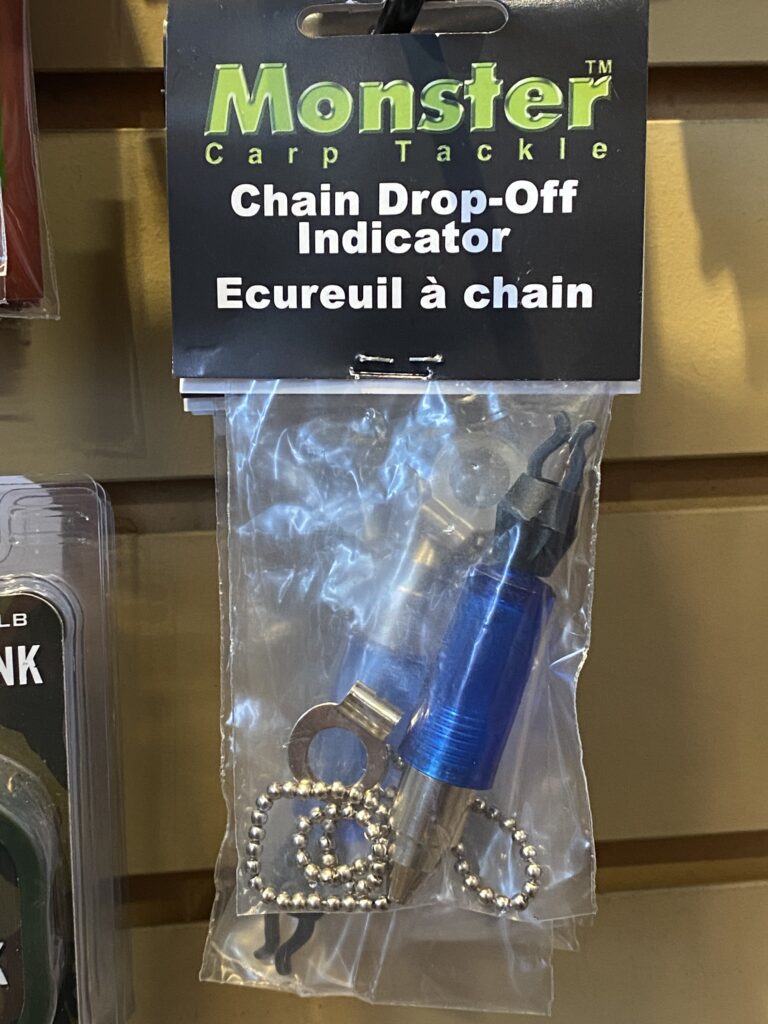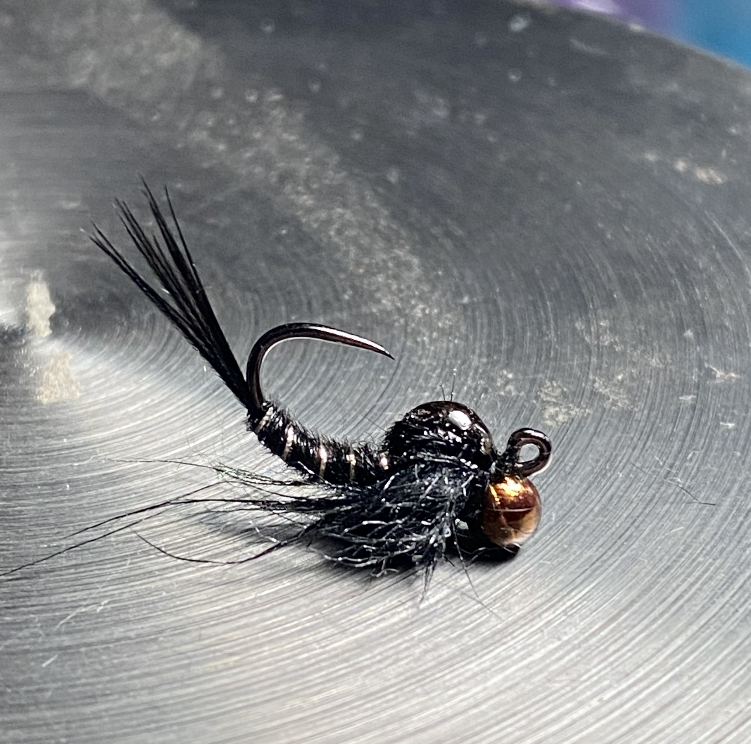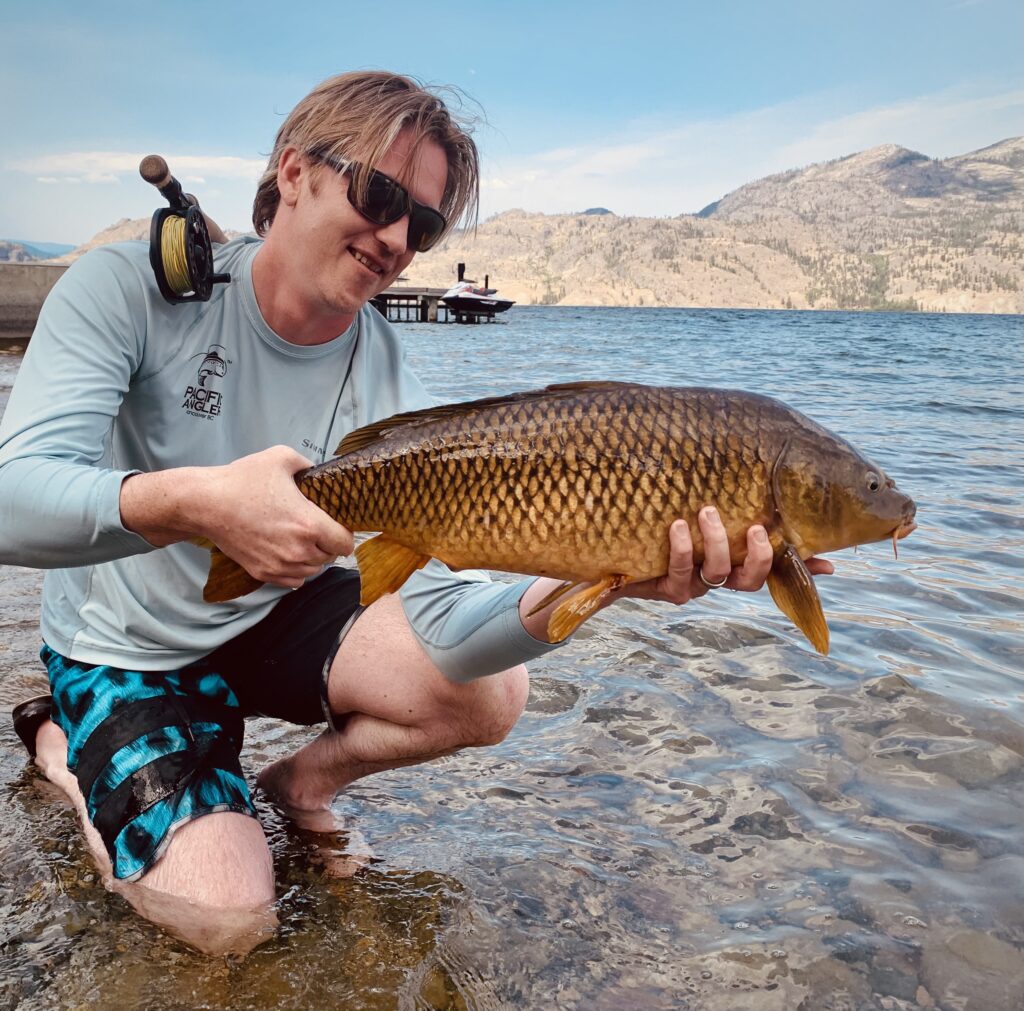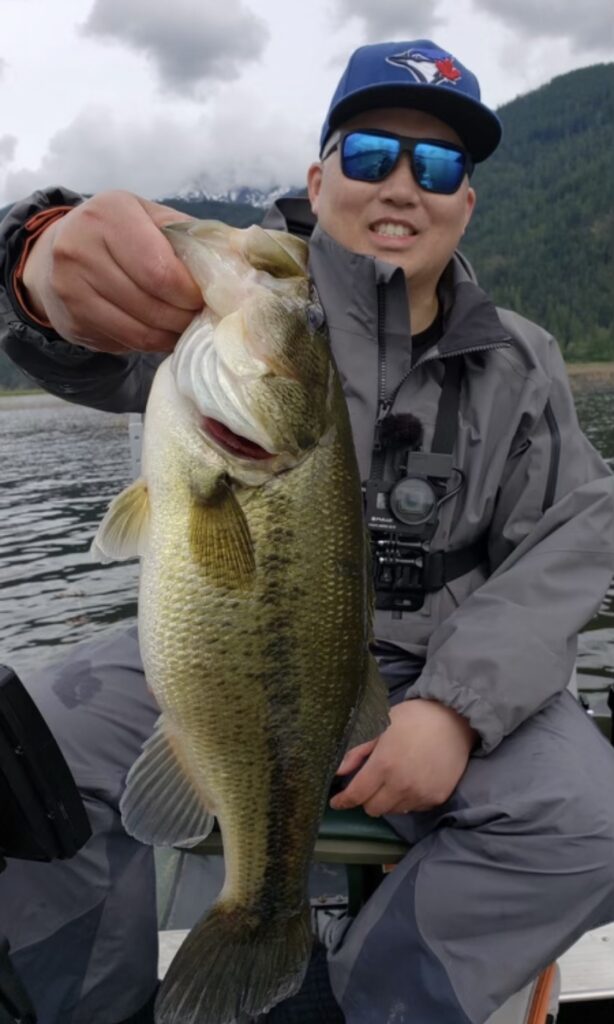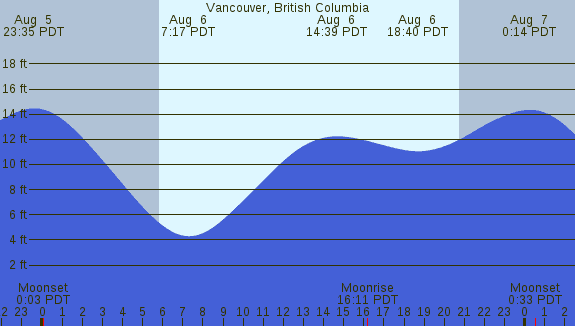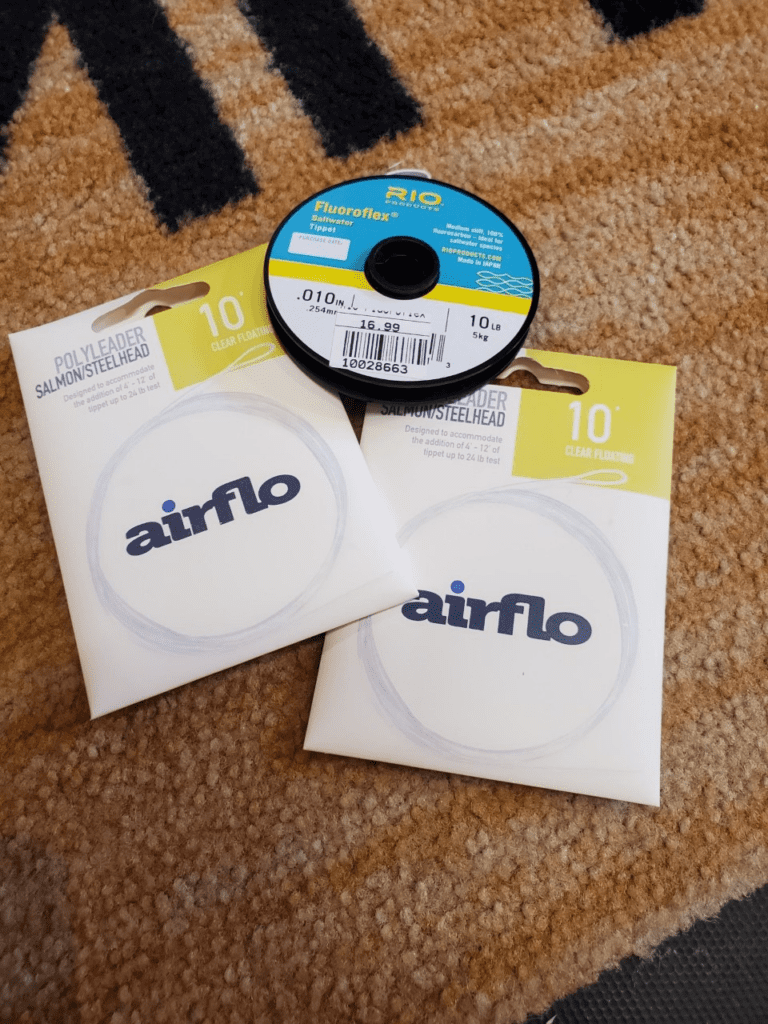OUTLOOK
The rain was a nice break from the heat this week and it was also a good thing for a number of our fisheries. We are back to nice weather this weekend with temps in the high 20s so it should be a good weekend to get out on the water. In this week’s report, we have a couple of interesting updates. The first one is on the product front. We have BNR soft beads in stock! These took the salmon world by storm over the last 3 seasons. Large soft plastics are not a “new” thing when it comes to salmon river fishing but BNR’s peg system allows anglers to “peg” the soft plastic an inch or two above a hook. This makes for a much higher hook up ratio and some say that because you can use a smaller hook, they drift better than traditional large soft plastic egg imitations. We have a great selection of colors in stock right now so if you are planning to get out this fall salmon season make sure to load up now as supply is always a challenge in season.
On another product front, we are re-stocked up on carp gear and we have expanded the section. In this week’s report Matt has written a Carp “How To” where he looks at both the gear fishing side of the fishery as well as some tips on how to tackle carp with a fly rod.
As it is now August, we have another great warm water fishery to not forget about. That is bass! We have also expanded our bass section in the store and in this week’s report we are looking at how to use swim baits both by themselves and in conjunction with other lures. Check both the carp and bass pieces below.
On the more conventional side of our local fisheries, we have a Chilliwack Report where the red chinook fishing is slowing down. There is still an opportunity to get out now but we are now starting to think ahead to the fall fishery.
We also have a Capilano beach fishing update. There are some good tides coming up and it is another fishery worth looking at right now.
Last, Matt has a little look at the trout stream fisheries. We are getting into prime water levels right now and with increased sockeye numbers and more sockeye coming, we might see some interesting early beading opportunities for trout in rivers that have salmon.
On to the report!
CLASSES AND COURSES
Our classes have wrapped up for the summer season but we will be back in the fall with these exciting classes. Call the shop at 604.872.2204 to sign up before they sell out.
INTRODUCTION TO FLY FISHING
This course was specifically designed to give the new fly fisher the basic knowledge, casting skills and fly fishing strategies to effectively fish our local BC waters. This course is comprised of two sessions; 3hr evening seminar and a 3hr casting session. The dates below show the seminar date first and casting date second.
Dates: Sept 20 & 24
Cost: $150.00
Zoom Seminar Time: 6:30pm – 9:30pm
Casting Time(s): 10am – 1pm or 1:30pm -4:30pm
INTRODUCTION TO FLY TYING
There is no greater satisfaction than catching a fish with a fly you tied yourself. This Introduction to Fly Tying course was specifically designed to give you the fundamental skills needed to tie proven fly patterns used here in BC for trout, salmon, and steelhead.
This course consists of 3 sessions; each session is 3hrs.
Students are required to supply their own vise, tools and materials. A 10% discount is available on fly fishing materials and tools purchased for the course.
Dates: Sep 27, Oct 4, 11
Cost: $80.00+GST
Time: 6:30pm – 9:30pm
INDUSTRY EVENTS AND UPDATES
Join Our Team
Summer is in full swing here at the shop and we are looking for retail associates to join our team for the late summer, fall and beyond! Full and part time positions are available.
Check out the shop posting here.
FRESHWATER FISHING REPORTS
Chilliwack/Vedder River Fishing Report
We’re into August now, and the summer salmon season is definitely slowing down, as expected. There will still be some fresh chinook showing up until the middle of the month, but a large majority of the run is already in the hatchery. Those of you who still want to get out and look for springs will find the highest concentration of fish in the upper river, but note that they will most likely be quite dark; there will be the occasional fish in the lower as well, but most of these fish will be pushing through fairly quickly, despite the dropping water levels. Taking an active approach and moving around to find fish should yield the best results; there’s no point in pounding a run if there aren’t any fish there.
Historically, the month of August has been quite slow on the C/V- the summer-run chinooks and sockeye are done, and the fall-run salmon haven’t quite showed up yet.
Like most coastal rivers, the C/V does not sustain significant quantities of resident trout due to its high gradient and extremely variable flows.
That’s not to say that there are absolutely no trout around; there definitely are. Walking around the upper river during the “slow” months with a fly rod or ultralight spinning setup can still produce some action, as there are plenty of whitefish around that are always willing to drop an indicator or eat a worm. There will also be a handful of true resident rainbow trout around- I’m talking about actual rainbows that will live their whole lives in freshwater, not the steelhead smolts that most people refer to as “trout”. These resident fish are usually larger than the juvenile steelhead, seeming to average around 12”-14”, with a slightly different complexion. These fish are a ton of fun on light gear, and their relative scarcity makes it even cooler when you do find one. Of course, there will also be a lot of steelhead smolts around, and they will be encountered very often when fishing light gear. We ask that you treat any wild smolts you encounter with a great deal of care, and release them unharmed so that they might come back in a few years. If that wasn’t enough, there will also be very limited numbers of resident bulltrout hanging around, almost exclusively in the upper river. These fish are often fairly small compared to the ones you find later in the season, averaging under 16”, but they are still very cool to find.
Those of you who don’t care for small fish will have to wait for the first of the fall-run salmon to arrive, which usually happens around the first week of September; the first fish to arrive are the white chinooks. Some good numbers of white springs are usually present in the system by mid-September, depending on water temperatures and levels, so there’s a bit of a dry spell after the last of the red springs are gone. This dry spell can be occupied by targeting trout/whitefish and scouting the river during low water levels to find spots for the fall – not a bad idea if you ask me.
Taylor Nakatani
River Levels and Trout Fishing update
We are still following the 2 week “late” program that we have seen all season. This means we are starting to see nice wadable river levels on our local trout rivers. The reports we heard from the Skagit this week were more positive but, as everyone knows, the access issues are the major challenge. I reached out this week to Transport Canada to see if there is any news on the timeline for accessing the lower part of the river above Ross Lake but as of now on the Transport Canada website you can still not access the river via the Silver Hope Road. Check here for the latest update.
For the anglers going out on the Skagit, nymphing is still where to start but we have heard of some mayfly hatches and a few fish coming on dry flies. This should continue to improve over the next few weeks. Small golden stone, prince nymphs and girdle bugs should be in the fly box along with your classic small grey parachute mayflies. We have not heard of any larger mayflies yet but with limited access and limited reporting I would still have these in the box ready to go.
The Thompson and Birkenhead are coming into shape nicely and it leads us to another thing to consider if you are heading out. Do a little research and see if your stream has sockeye and chinook in it. We have had poor returns for the last 4 years but it looks as though the early summer sockeye returns are quite healthy if not record setting in some areas. This means bead fishing for the trout that will be targeting sockeye eggs. I use the same bead rig we use for fall fishing on Squamish and it is well worth making sure you have at least a couple bead/egg options with the appropriate indicators and split shot in your kit. If your river has spawning sockeye in it, the bead fishing can produce some of the best trout fishing of the season.
Good Luck,
Matt Sharp
STILLWATER FISHING REPORTS
Carp Fishing Basics
We have lots of carp in BC and very few carp anglers. Around the world, carp fishing is sometimes the most popular fishery in a given area but in BC carp are an afterthought. In this quick writeup I am going to walk you through how I carp fish. From the simplest rigs I use for fun on family vacations, to more involved setups with bite detectors, specific baits even fly rods.
When I first started, about 20 years ago, it was as simple as putting a piece of corn on a hook but there are many techniques and specific gear that make it way more effective. At the end of this write up I will also talk a little about carp on the fly. This, in my opinion, is one of the coolest and most challenging fisheries in BC and well worth the effort.
Keep it Simple Carp Rig
Ok, sometimes we all just want to toss out a line and see what happens. When I am in this low effort fishing scenario all you need is a spinning rod in the 6-12lb or heavier rating, 12lb or heavier mainline (30-40 braid is best) a 3/4 oz egg weight, a swivel, 18inches of 8lb leader and a small 8-10 size hook. Grab a can of whole kernel corn from your local supermarket and you are in the game.
Cast this rig out into 2-6 feet of water, reel back a foot or two to straighten out your presentation and then set the rod in a lawn chair…. Or better yet a rod holder. Don’t forget to back off your drag on your reel so that the whole mess doesn’t get dragged down the bank if you are not paying attention.
Taking Carp to the Next Level
The above simple rig has caught lots of carp for me but there are a number of ways we can make it way more effective. The first thing to look at is a proper bank stick setup and a bite detector. They are not expensive; they are easy to use and you will be shocked at how many bites you were missing before using one. One thing that sometimes gets overlooked is you will need a drop off chain indicator. This simple device puts tension on your line to hold it in the bite detector. It reduces line slip and missed bites. Yes, you can use a beer can and a multitool to make your own (ask me at the shop and we can show you how) but the purpose-built indicator is much more efficient and easier to use.
This bite detector setup changes the game and using it with the simple corn rig above is very productive but if we want to level up one more time, we want to look at the rig. There are many ways to make this rig more effective. I would say the most important is the hair rig. This puts the bait behind the hook so the fish does not feel it when he picks up the bait. You use a “knotless hair rig knot” (look it up – it is super simple). This puts a tag of line off the back of the hook. On this tag you tie a simple small overhand loop. We then thread the corn or other bait onto this line with a bait needle. There are a few diameters of bait needles that will work best for different baits. For corn you want just a simple thin hook needle. For other baits an open clasp needle and a drill is better. When the bait is threaded on, you anchor it with a hair stop. A hair stop is a little plastic dumbbell that goes through the loop after the bait and secures it in place. We have a good selection at the shop of both needles drills and stops. Come down and the guys will show you how to use them so your bait doesn’t fly off.
Insert bank stick shot -caption “Our two angler bank stick setup – Note: you can only fish one rod if you are the only license holder tending to the rods – in this picture Matt’s entire family have freshwater licenses and love pulling in the fish when the bite alarms go off.”
Level 3 Carp Fishing
What I do – I would call this an advanced carp rig but many dedicated carp anglers consider what I am doing still pretty basic.
I use a dedicated rod with 40lb low vis braid. I then use a bait feeder. This is a spring coil that goes above the swivel. In this spring I pack a mix of oatmeal, cornflakes, nuts and fruit flavouring (kool aid powder works well).
Now before I get any farther, I want to note that when I first saw this rig I thought it was illegal. In BC we are not allowed to bait/chum an area. As I learned more about the setup and the carp fishery, I realized that you actually want your hook to be buried in the ball of oatmeal. This makes it one bait presentation. This is legal on the technical front but I also think it holds true with the intent of the fish regulation. The intent is to stop anglers from spreading large quantities of possibly harmful baits into a water system to attract fish. If the bait gets spread out or you repeatedly cast to an area with the intent of baiting the area, which is illegal, the carp actually stop biting because they get full. You want a small amount of the bait with your hook right in the middle of it to be the most effective.
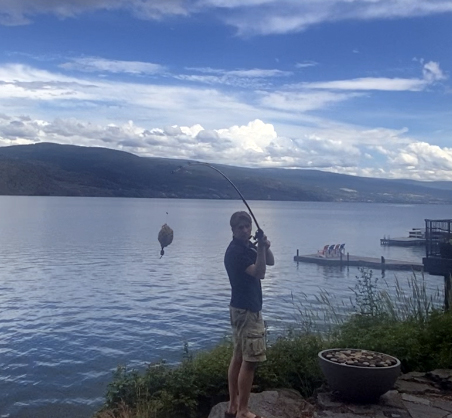
Below the bait feeder I use a swivel, a spacer then a very short 6 inch leader of 15lb sinking leader line. To this I have a size 8 hook hair rig and my bait of choice. I won’t get too into baits today but we have a good selection of corns and boilies at the shop to try.
Cast it out, reel tight, set your drag to loose and make sure the bite detector and chain indicator are set. Then the waiting game begins.
Fly Fishing For Carp
For many anglers the above style of “sit and wait” fishing is not their jam. I get it. I love all kinds of fishing but I prefer active fishing. There is no bigger challenge for the active angler than catching a carp on the fly. This is coming from a guy who has a half dozen permit under his belt and has spent thousands of hours chasing steelhead with dry flies.
First off you will want a 6-8wt rod. (I use a 7wt)
Set up the rod with a good floating line. I recommend a fly line with color changes to gauge distances before you cast. I use a Rio Gold but there are many good ones so long as they are a balanced line and not too punchy. When fishing open areas or from a boat, I use a 10ft 8-10lb fluorocarbon tapered leader but I also carry a 5-6ft 8lb fluoro tapered leader for tight bank fishing. The shorter leader when scrambling through bull rushes and high bank grass with short “chip shot” casts is a game changer for getting your fly to the fish.
On the fly side of things, we have a number of cool patterns specifically for carp in the store but I have had fun tying my own in a verity of weights and sizes. Come down to the shop and we can show you some options that have worked for me.
The most important part of the equation is location. First off you need water where there are carp. The second thing you need is depth and water clarity to see the carp and third you need room to cast to them. Sounds pretty simple but 80% of my carp fishing is spent hunting for spots, or scouting access. I won’t give away spots but look to any slough like piece of water in the Lower Mainland. Figure out what direction the sun hits the water throughout the day (you want the sun at your back to see into the water) Then put boots to ground and eyes to water. Polarized glasses are a must. Yellow lenses are my favorite for our often-cloudy skies but brown works too (grey is not great for most conditions).
I could write an entire book on carp behavior and how to cast to different fish but my most successful scenario is when carp are rummaging around on the lake bottom. If you observe this behavior, wait until they have their head down feeding and place a cast 1-2ft in front of them and a couple feet past them. I then “slide” the fly as it drops with a long slow retrieve to try and land it on the bottom of the lake right in front of the fish. Sometimes they react right away but if they don’t either spook or jump on the fly wait a second to make sure the fly is on the bottom then give it a couple short bump strips. If they react, continue with a long slow strip to get tension to feel a bite. If they don’t react, stop and wait. If the fish is in the area after 3-5 seconds try a couple short strips to get the fishes’ attention. Rinse and repeat. You will miss 90% of carp so after a half dozen refusals don’t give up, just keep the flies in front of fish and it will happen.
Good Luck!
Matt Sharp
Bass Fishing: How to Elevate your Spinnerbait & Buzzbait Game
Swimbaits and buzzbaits are some of the most easily recognizable bass lures, and for a good reason. They are time tested and still one of the most popular presentations for bass. They can attribute their popularity to their ease of use: tie onto line, cast and retrieve; that is it. “If it ain’t broke, don’t fix it” right? Well, it isn’t broken, but there are definitely some improvements that can be made to the buzzbait and spinnerbait.
First off, I am a big believer in using trailers on pretty much all my lures. Soft plastic trailers can extenuate the profile of your presentation; adding more bulk and silhouette can be critical in low visibility situations like the algae blooms we see prominently in the summer.
Trailers also act as a vessel to apply scent. Without a trailer, spinnerbaits and buzzbaits get gummed up with scent applied to the skirts. The biggest advantage to using a trailer such as a swimbait is the increased vibration and it provides a hotspot for fish to target. Often times, bass will hit the blades instead of the actual jig when retrieving spinnerbaits. A swimbait trailer is a large profile that is easily seen and felt, resulting in more strikes on the hook, positive hookups and landed fish.
The Lunkerhunt finesse swimbaits are great for tipping onto spinnerbaits and my favourite for the buzzbaits are the Largo shad to create that heavy “thump”.
Give it a try next time,
Gavin Lau
SALTWATER FISHING REPORTS
Capilano Beach Fishing Report
This past week has seen the beach fishery along West Vancouver start to pick up and produce some nice fish for those anglers venturing out. Though the past little while has been spotty with the odd angler touching a fish here and there, there seems to be more and more reports of anglers encountering fish on a more regular basis.
The biggest factor will be accessing these fish, with the tides and sandbar playing a big role.
Starting on Friday and continuing on into the week, we have some great tides in the morning. These morning tides all drop below six feet, allowing anglers to access the coveted sand bar outside the mouth of the river.
With bright skies in the forecast for the next few days, these morning tides may provide some great chances at these spooky fish. Morning tides with a big flood push, low light, and an un-navigable river will all help keep coho staging off the mouth of the river.
As we move farther into the week, we start to see some clouds and rain, paired with big tides- this should prove positive for those able to get out mid-week.
Small krill or euphausiid imitations should make up a majority of any fly angers box, with a few flash flies or baitfish imitations thrown in for good measure. Handlebars and Beach Niels are also great options if your box is a little more influenced by the Island fisheries.
Floating lines, clear floating Poly-leaders or similar, matched with some light tippet is a great starting point.
Stripping baskets are also a great help for keeping line up and out of the water, inhibiting surface friction while casting, allowing you that extra foot or two of distance sometimes needed.
For those on traditional gear, all your regular offerings should be well received. Spinners, spoons, Buzz-Bombs, and even dead-baiting can produce fish from the beach. The anglers that do well are usually the ones who are well prepared and are able to adjust to various conditions.
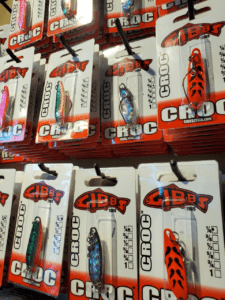
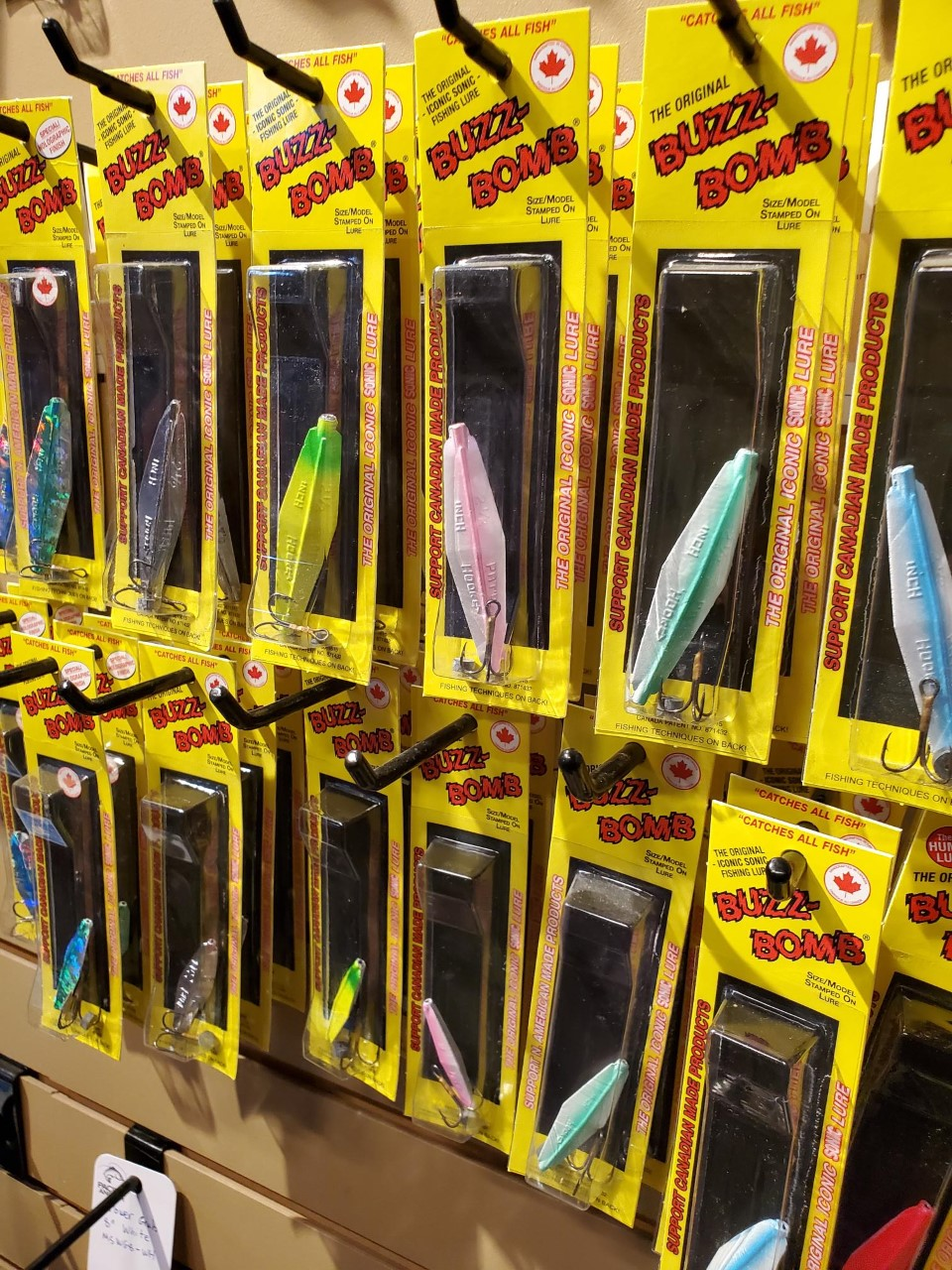
Good luck out there!
Jordan Simpson


